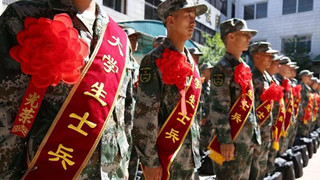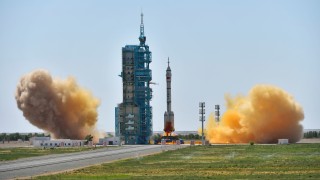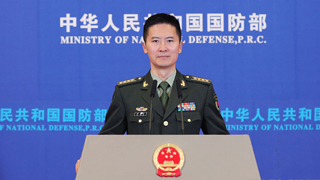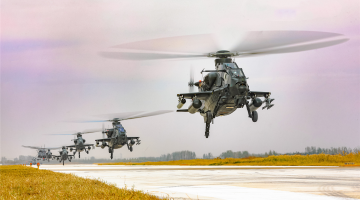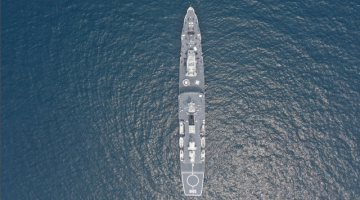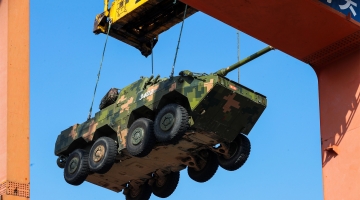By Zhang Yifan
The US recently released an unclassified version of its 2022 National Defense Strategy (NDS) report along with the Nuclear Posture Review and Missile Defense Review, which give a glimpse of the future trend of its defense and military development, with six points worth special and close attention.
China is labeled as a pacing challenge.
The NDS defines China as a pacing challenge and Russia as an acute threat. That the Biden administration’s first NDS makes China the pacing challenge when the Russia-Ukraine conflict remains in a stalemate shows a fundamental change in the US government and strategic circle’s strategic judgment of China. That the report has passed the Congress’ vigorous scrutiny also indicates the White House’s intention of announcing that America’s strategic focus on coping with China as a pacing challenge won’t waver because of its military aid to Ukraine.
US emphasizes reinforcing the nuclear arsenal and refuses to raise the threshold of using nuclear weapons.
The Nuclear Posture Review stresses that the US will continue to modernizeits nuclear arsenal. Out of the military budget for the fiscal year of 2023, the Pentagon earmarked a USD30 billion fund for maintaining and upgrading its nuclear arsenal, and the figure is expected to keep rising. At the same time, Washington hasn’t changed its policy on the use of nuclear weapons as is widely expected. Biden, when running for presidency, said he would try to push the “no first use” policy and the “sole purpose” policy – in which the US would only use nuclear weapons to prevent or respond to a nuclear attack. However, now the Pentagon announced in its report that after a thorough review, they concluded that those approaches would result in an unacceptable level of risk in light of the range of non-nuclear capabilities being developed and fielded by competitors that could inflict strategic-level damage to the US and its allies and partners. In other words, the US will use nuclear weapons when in face of non-nuclear attacks.
An integrated deterrence system will be established.
Integrated deterrence is a concept initiated by US Defense Secretary Lloyd Austin. The NDS defines integrated deterrence in three forms. The first is deterrence by denial, meaning Pentagon will develop asymmetric approaches and optimize its posture for denial. The second is deterrence by resilience, which will ensure the US military’s ability to withstand, fight through, and recover quickly from disruptions in the face of multi-domain attacks on a growing surface of vital networks and critical infrastructure. The third is deterrence by direct and collective cost imposition, which means imposing costs in excess on the adversaries through punitive deterrence.
US will suppress competitors by shaping their perception.
The NDS says the US military will enhance its operating capability and take a series of military actions to shape perceptions, including by sowing doubt in competitors that they can achieve their objectives, thus disrupting their warfighting advantages. Working with allies and partners, the US will strengthen elements needed in crises or conflicts, such as infrastructure, logistics, command and control, dispersal and relocation, and mobilization. This will require the comprehensive utilization of a broad range of approaches, including intelligence sharing, economic measures, diplomatic efforts, information warfare, and network offensives/defensives. It will also require close cooperation between the Pentagon and other US government agencies as well as enhanced military deployments worldwide of the US troops and strengthened cooperation with allies to double up on deterrence.
US will seek to maintain superiority in military technologies.
The NDS shows that the Pentagon will implement fast testing, procurement and deployment, strengthen R&D in futureand key technologies, and advance cutting-edge technologies with business partners. In the meantime, with a growing reliance on data, the US military will integrate data from various sources. Pentagon will also launch an organizational reform to integrate data, software and AI technology, and accelerate data distribution to frontline forces.
US will keep strengthening alliances.
The NDS emphasizes that close collaboration with allies and partners is foundational for US national security interests and for the collective ability to address challenges. In the Indo-Pacific region, it will modernize the alliance with Japan and strengthen combined capabilities by aligning strategic planning. It will deepen the alliance with Australia through investments in posture, interoperability, and expansion of multilateral cooperation, and foster advantage through advanced technology cooperation with partnerships like AUKUS and Quad. It will advance the partnership with India to enhance its ability to deter China. The Pentagon will support the asymmetric self-defense of Taiwan region, work with the ROK to continue to improve its defense capability and work with Southeast Asian countries to better address regional security issues. In Europe, the US will focus on fortifying NATO’s ability to cope with military threats from Russia.
Editor's note: Originally published on huanqiu.com, this article is translated from Chinese into English and edited by the China Military Online. The information and opinions in this article do not necessarily reflect the views of eng.chinamil.com.cn.
